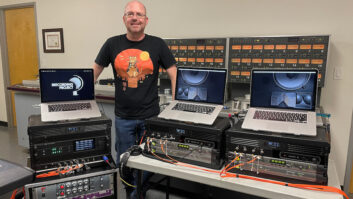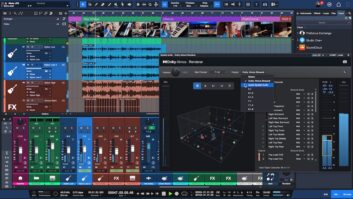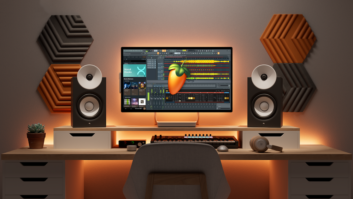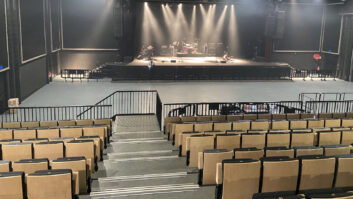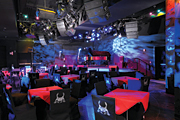
The state-of-the-art Meyer Sound system can be shifted into five different configurations.
What becomes a legend most? If you’re taking over the space that once housed one of the most beloved live music venues on the East Coast — New York City’s Village Gate — you have two choices: Re-create it or reinvent it.
The entrepreneurial duo of David Handler and Justin Kantor chose reinvention, as they took over the 12,300-square-foot duplex space, rechristened it Le Poisson Rouge (www.lprynyc.com) and updated it for the 21st century. Today, the 800-capacity room not only offers audiences extremely clean live sound every night, it also provides crew members with a high level of versatility.
The venue redesign was guided by Walters Storyk Design Group’s John Storyk (architect/acoustician) and his partner/wife, interior designer Beth Walters. Their firm helped ready the room for multichannel surround sound capable of 7.4 and the more commonly used 5.1, or stereo or mono; the club gives technical director/head sound engineer Josh Loar choices, choices, choices every night. “There’s not a room this size in New York City with the equivalent degree of flexibility and sound quality,” Loar says. “Part of the whole mission of this place is to create a venue that is for all music, not just rock or hip-hop, but also classical, jazz, blues, international and avant-garde. What we’re striving for here is to have a standard of excellence that’s missing in the New York City nightlife in a club this size.”
Loar, Storyk, WSDG associate David Kotch and installer Masque Sound’s audio specialist Paul Klimson examined every aspect of the challenging 3,882-square-foot performance area — bedeviled by inconveniently placed fixed columns — to make it adaptable to almost any situation. For example, the raised-balcony VIP area creates a much needed storage space for the club’s Yamaha S6B grand piano and additional chairs. Meanwhile, a multiconfiguration, portable stage can emerge from beneath the main stage to provide an in-the-round position at the center of the club. The 200-square-foot multiformat stage can also be configured with a semicircular, “dropped front extension,” or in “fashion-runway” mode to accommodate various performance styles.
For Loar and visiting engineers, however, the real star is the Meyer Sound system, headed by the first Digidesign VENUE Profile Console Mix Rack (48-in × 16-out) installed in New York. The board also allows Loar to take advantage of plug-ins such as Sonnox Oxford EQ and dynamics to enhance live mixes, and the limiter for premastering CDs and downloadable performance releases. Le Poisson Rouge has a “three-clubs-in-one” versatility that can be shifted into five different speaker configurations. “Every element in the venue’s design was selected to optimize the performance of the sound system,” Loar explains. “We joke that this is our spaceship: It’s really fast, and when you have classical musicians first, a funk band second, and DJs and party bands for late nights — all of whom demand soundcheck — we spend half as much time setting up than we would with any other type of system.”
For the WSDG team, Le Poisson Rouge was a chance to step outside of the studio recording world and share their skills with concertgoers. “Le Poisson Rouge would be big for a studio, but the fundamentals of acoustics are the same,” Storyk points out. “It’s a relatively small room where factors such as low-frequency behavior and reflection control have to be managed — skills that are required in recording studio design.”

